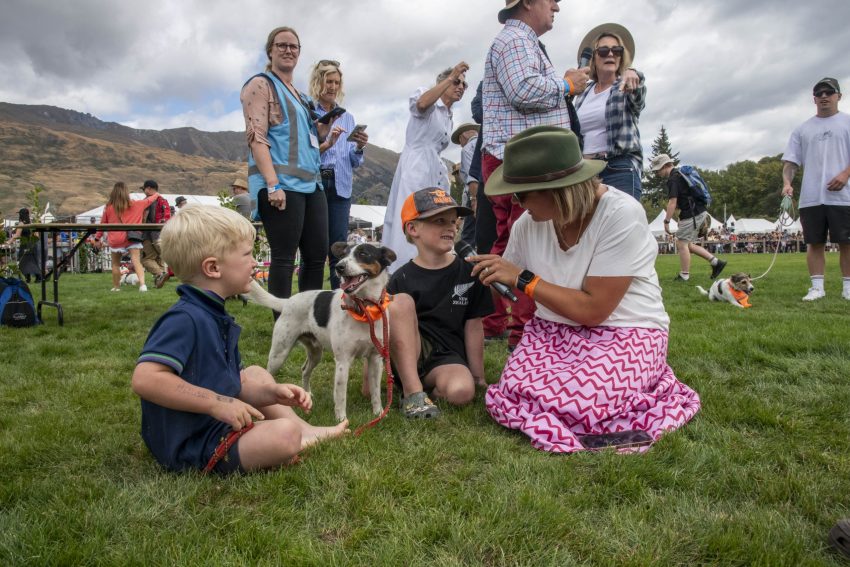Kiwi for Kiwis
A scheme to return kiwi to farms to the west of Wellington is on target. Sarah Horrocks reports.

A scheme to return kiwi to farms to the west of Wellington is on target. Sarah Horrocks reports.
When the capital kiwi Project asked Terawhiti farming manager Guy Parkinson about establishing kiwi on the farm, the question was met with, “We’re Kiwis, of course we want kiwi, but what about the stoats?”
The project spans almost 24,000 hectares, from Red Rocks in the south to Porirua in the north. About 75% of the project is on privately owned land and is founded on the willingness of more than 100 landowners to get behind the mission. Terawhiti is the largest single block (4808ha), then there’s Kinnoull Station and Makara Farm in the south, as well as the Mill Creek farms, Papanui (Boomrock) and Pikarere further north.
Four years ago, the plan began with a mammoth trapping effort and the goal to restore a large-scale wild population of kiwi.
Paul Ward, founder and project lead at Capital Kiwi, says in that time they’ve pulled more than 800 stoats from traps, 161 of them from Terawhiti. The total cost of the trapping has cost about $900,000, which falls squarely on the shoulders of Capital Kiwi, rather than the landowners.
“We want to remove the barriers to pest control, and show what can be achieved working together,” Ward says.
On Terawhiti alone there are about 870 traps – a mix of gas-powered Goodnature and spring-loaded DOC250 and DOC200 traps. About 40% of the project’s $4.3m funding comes from Predator Free 2050 Ltd and the aim is to eradicate stoats altogether. However, Ward knows that if they can get stoat numbers low enough, which they have done, they can grow a kiwi population.
“You just have to be able to get enough chicks up to fighting weight.”
When the trapping began, the team wasn’t sure how hard it was going to be to lay traplines in the steep, scrub-ridden environment at Terawhiti, but once they got started it was clear that the myriad of highways and access roads created for the wind farm were a godsend.
“It’s a bit like trapping for old men,” Ward says.
Team members had been involved in setting up a trapping network on Resolution Island in Fiordland where they cut 400km of traplines from scratch, so the 3km they cut at Terawhiti is comparatively insignificant.
As well as the stoats, there are also pigs in the environment and while they can cause disturbance to burrows, they’re not considered a major predator threat. When Guy Parkinson arrived at Terawhiti in 2009 the place was overrun with wild pigs.
This was partly a consequence of the wind farm’s construction, which prohibited all hunting during the five-year build, but once this restriction was lifted, hunters shot 90,000 possums and 900 pigs in the first 12 months and possum control now sits at a steady 10,000 a year.
While the farm might be ‘textbook marginal hill country’, according to Ward it’s a haven for kiwi, with an abundance of manuka in sheltered gullies, good seepage and streams, and ample food sources.
Getting their hands on kiwi was no small feat in itself. Once technical criteria had been satisfied, a run of red tape and hoops had to be unwound and jumped through prior to DOC granting approval. Capital Kiwi has been given a permit for 250 kiwi to be released over the next six years, with the first 11 released on November 19, 2022.
“It was a pretty special day for everyone in the team and for the community,” Paul says.
A crowd of 300 turned out to Makara School to welcome the North Island brown kiwi that had travelled from Otorohanga Kiwi House with iwi who were their kaitiaki, Ngati Hinewai.
After a powhiri, the kiwi were given a health check and a transmitter to ensure they could be monitored.
“The crowd were quite stunned by the size of 44-year-old Anahera, the matriarch of the group, who weighs a whopping 3.2kg.”
Ward says her size gave an appreciation of how much kiwi have going for them as adults, when they can use their claws to fight off everything except ferrets and dogs.
Ferrets aren’t a problem at Terawhiti due to the rabbit calicivirus wiping out their food source and consequently the ferrets too, and dogs are also few and far between, with strict access restrictions for the public. All the farm dogs at Terawhiti have been through kiwi aversion training.
Once everyone’s mouths had been lifted back up off the floor at the welcome, Anahera and the rest of the kiwi were taken out into the middle of Terawhiti and placed in makeshift burrows for a few hours before being released at night. Paul says they expect the kiwi will all find and dig new burrows and pair up as necessary.
“Kiwi are super territorial, with each pair claiming up to 40ha.”
From here on they will be closely monitored for their locations and captured and returned to the drop area if they wander too far. Paul says the project plans to release another 20–30 birds in autumn 2023, but without the support of landowners they would never have been able to get it off the ground.
Paul is adamant that getting kiwi back into the Kiwi backyard has been reliant on the goodwill and support of farmers like Guy Parkinson at Terawhiti.




